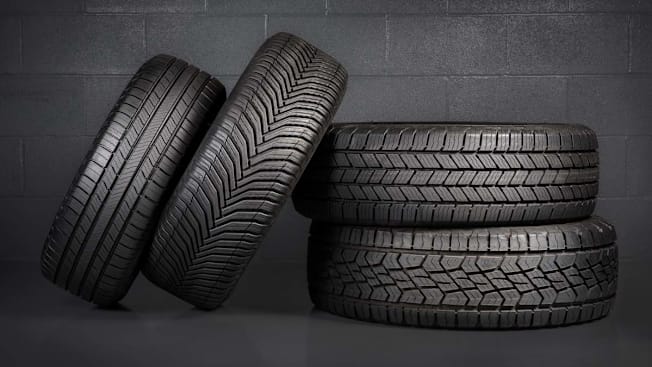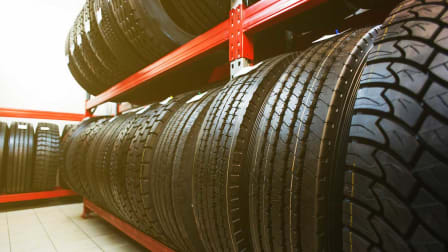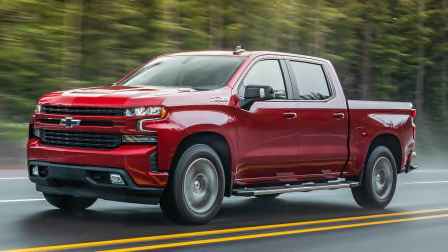Tires That Last the Longest
Our tests reveal the ones that deliver the best projected tread life without sacrificing performance or safety

Tires are a vital investment in your car—and a pricey one, too. On average, Consumer Reports members spent $223 per tire, according to our latest survey. But the real value of that purchase depends on how long the tires last before they’re so worn they need to be replaced. After all, the longer a tire’s lifespan, the less it costs per mile to use.
Ideally, you want to find tires that are long-lasting while also possessing other important attributes, like dry and wet grip, ride comfort, and quietness. The good news is that for many drivers it’s possible to find tires that strike that balance, says Ryan Pszczolkowski, CR’s tire program manager. In addition, there are things you can do to prolong the life of your tires, no matter which ones you buy.
When shopping for tires, you’ll find the treadwear rating—a number indicating the tire’s predicted longevity—on the sidewall, the smooth section of rubber between the tread and the rim. The higher the number, the longer the tire should last (a tire with a treadwear rating of 200 should last twice as long as a tire rated at 100). But those treadwear numbers come from the manufacturer and are influenced by marketing decisions. And they don’t actually tell you how many miles you will get.
Shopping for Tires?
See our tire buying guide and ratings.
Drive Smoothly to Save Money
Buying tires rated to last a long time isn’t the only way to avoid frequent trips to the tire shop. There are also ways to drive and to maintain your tires that will extend their longevity.
Chief among them: "Don’t abuse your tires," says Gordon Gingras, Consumer Reports’ automotive engineer. When possible, avoid extreme acceleration, braking, and cornering. These three dynamic actions wear down tread. This is particularly a concern with high-performance vehicles, whose powerful engines can invite playful driving.
How to Make Your Tires Last Longer
Monitor the pressure. Tires lose pressure over time, and not having the right pressure can speed wear and hurt performance. Check the pressure once a month, after the car has been sitting for a while, comparing the number with the pressure recommended in the owner’s manual. (See our ratings and buying guide of tire pressure gauges, and find out what to do if your tire-pressure warning light just came on.)
Rotate the tires regularly. Having a mechanic move the tires to different positions on the vehicle—for example, from front to rear—can ensure they wear evenly. Manufacturers usually recommend rotation every 5,000 to 10,000 miles. Check your manual for specifics. (Find out how often to rotate your tires.)
Check the alignment. Properly aligned wheels can help reduce tire wear. Have an alignment done every time you buy a set of tires, if your car is pulling to one side, if your steering wheel isn’t centered when the wheels are pointing straight ahead, or if you notice uneven wear on the tires.
Get tires balanced. When you get new tires installed, mechanics ensure that they spin smoothly by adding wheel weights to make corrections. If you notice your car shaking or vibrating, bring it to the shop to have the balance checked.
It may seem obvious, but watch out for potholes and other big road bumps or gullies (navigation apps like Waze can often warn you of their presence). Impacts can harm not only your tires but also the wheels and suspension. "Tires can sustain internal structural damage that you can’t see by simply looking at them," says CR’s Pszczolkowski. "The tire may hold air and look fine, but after a really hard pothole strike, it’s worth it to have a professional inspect your tires and wheels for damage that warrants tire replacement or wheel repair."
With potholes, avoid the instinctive response to swerve around them, because overlapping another lane can lead to other risks. Often, moving slightly to the side within your lane can allow the car to straddle the hole. See our pothole survival guide for tips on protecting your tires and wheels.
The Extended-Warranty Question
Choosing a tire with a warranty brings protection against manufacturer defects and sometimes covers tread life. To take advantage of a tread life warranty, owners typically have to document that they were diligent with tire rotations—so keep any paperwork you get from the tire shop.
Because the greater threat to tires is more often punctures and potholes, and given the high costs for replacement, our experts say it is worth getting a road hazard warranty. This is often included in the purchase or it can be bought as an add-on. (Many major tire retailers, such as BJ’s, Costco, and Tire Rack, include a road hazard warranty as a free perk.) This coverage can be especially useful if you have had flat tires before, a sign that your routes put you at an elevated risk.
Best Places to Buy Tires
In 2023, we collected responses from 16,899 Consumer Reports members who purchased new tires within a 12-month period. In general, the survey respondents were satisfied with their purchase and installation experience at national auto repair chains, independent retailers, big-box stores, and warehouse clubs.
But there were some significant differences between the highest- and lowest-ranked shops. Just one retailer, Les Schwab Tire Centers, serving 13 states in the western region, stood out for top-tier overall satisfaction. Independent retailers hold second place in the rankings, showing that local businesses often outperform national brands.
Sixteen retailers provided an above-average experience, leaving nine rated as average. The lowest-ranked retailers were Mavis Discount Tire, Pep Boys, and Walmart.
Car dealerships also had a strong showing, making them a convenient and satisfying choice. However, members reported prices at dealerships were among the highest in the survey.
Wherever you choose to go for service, our experts recommend calling ahead or ordering online to save time: No retailer earned the highest rating for brand and model selection or for having the desired model in stock.
Editor’s Note: This article also appeared in the January/February 2025 issue of Consumer Reports magazine. It has been updated to clarify that cost estimates are for 100 miles.
































